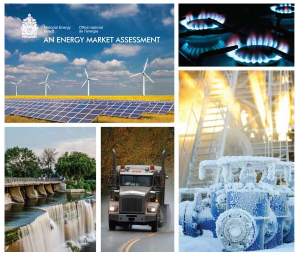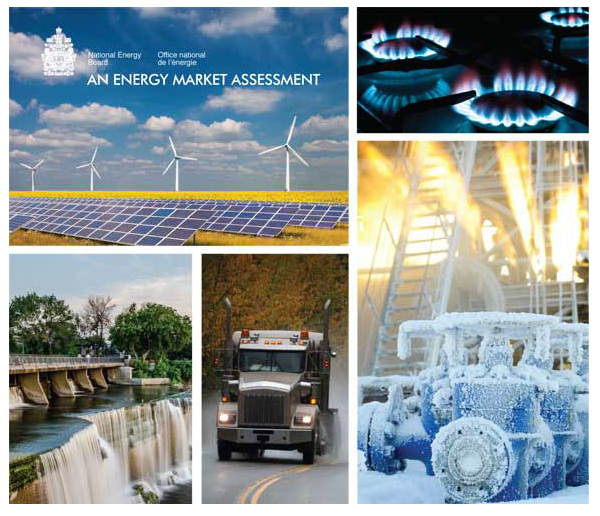
 The National Energy Board’s flagship document, Canada’s Energy Future 2016: Energy Supply and Demand Projections to 2040, is available for download.
The National Energy Board’s flagship document, Canada’s Energy Future 2016: Energy Supply and Demand Projections to 2040, is available for download.
Canada’s Energy Future 2016: Energy Supply and Demand Projections to 2040 (EF 2016) is a continuation of the National Energy Board’s (NEB) Energy Futures series. The Board released the last full report, Canada’s Energy Future 2013 (EF 2013), in November 2013.
In developing EF 2016, the NEB met with various energy experts and interested stakeholders, including representatives from industry and industry associations, government, non-governmental organizations, and academia to gather input and feedback on the preliminary projections.
The projections presented in EF 2016 are a baseline for discussing Canada’s energy future and do not represent the Board’s predictions of what will take place in the future.
C. Peter Watson, P. Eng. FCAE, chair and CEO of the NEB, writes: “Canada’s energy future will not be determined by a single force, but rather the interaction of many. Energy prices, economic growth, policies and regulation, market access and infrastructure development, and the development and use of new technologies will all play an important role. It is our goal to help Canadians understand these complex interactions through our analysis, reports, and statistics.”
Key Findings
1. Recent developments have highlighted numerous uncertainties for Canada’s long-term energy outlook.
2. In the Reference Case (a baseline outlook, based on a moderate view of future energy prices and economic growth), energy production grows faster than energy use and net exports of energy increase.
3. The levels of future oil and natural gas production are highly dependent on future prices, which are subject to considerable uncertainty.
4. Without development of additional oil pipeline infrastructure, crude oil production grows less quickly but continues to grow at a moderate pace over the projection period.
5. The volume of liquefied natural gas exports is an important driver of Canadian natural gas production growth.
6. Total energy use in Canada, which includes energy use in the energy production sector, grows at similar rates in all EF 2016 cases, and GHG emissions related to that energy use will follow similar trends.

